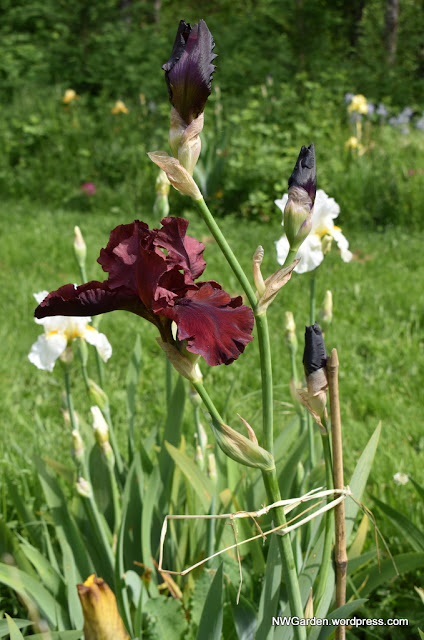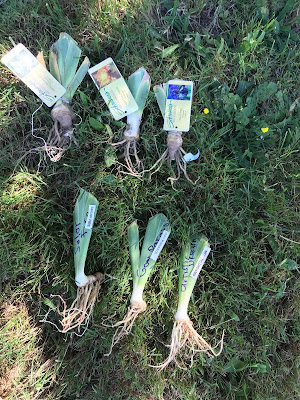I think some of the other bush beans I planted two days ago have started to germinate. I saw a couple of beans sticking above the soil. It could be that rain washed the soil away, but I'm hopeful. That was the Dragon's Tongue bush bean.
I think the soil temp is OK for about everything now Today was overcast and drizzly, with soil temp 68 F in the afternoon.
 |
| Soil Temperature today, 5.13.2020 |
I cleared most of the rest of one of the messiest raised beds. My inclination has always been to garden organically, but now I don't feel like I have that luxury. Still, I'm not using pesticides, just Osmocote and a little Miracle Grow here and there. For these, I treated the soil with Osmocote at the instruction amount. This is not the Jalapeno bed, with two slicing cucumber plants at the back. I raised all of these from seeds, planting last month. For peppers, it might have been smarter to start in Feb or March, but I wasn't up to it then. They are small, but I think they will do OK as the weather heats up.
 |
| Jalapeno Pepper Plants in a Raised Bed. 5.13.2020 |
I wondered if it was too cool a couple of weeks ago for planting pumpkins and squashes in the vegetable garden. I did cover them at night for two weeks. Since I stopped covering them a few days ago, they are really taking off. I'm most interested in the Pink Banana Squashes, for nostalgic reasons. It's growing nicely. Those French Pumpkins are good too. There may not be enough room for all of these, depends on whether the vines grow faster than the potatoes grow to clear out that area for spread. It might work out OK.
 |
| Galeux d'Esynes Pumpkin. 5.13.2020 |
 |
| Pink Banana Squash. 5.13.2020 |













































